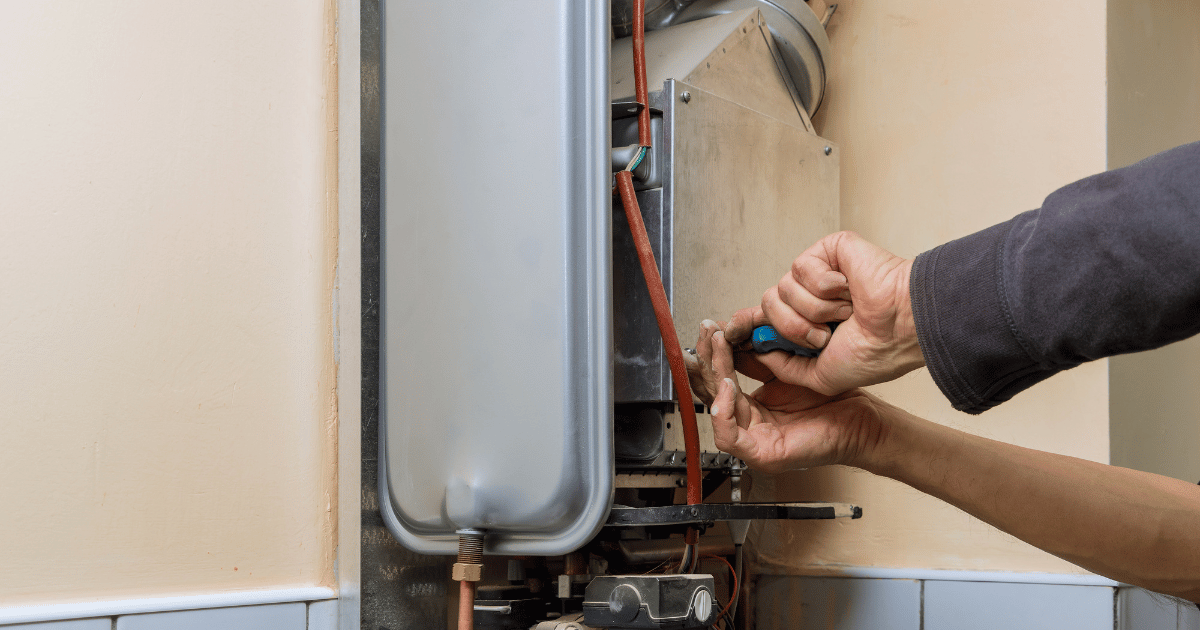We've come across the article pertaining to How to Maintain a Hot Water Heater in a Few Simple Steps listed below on the net and reckoned it made good sense to discuss it with you on my blog.

Hot water is crucial for daily convenience, whether it's for a revitalizing shower or cleaning meals. To ensure your warm water system runs effectively and lasts longer, regular upkeep is crucial. This short article provides sensible pointers and insights on how to keep your home's warm water system to avoid disturbances and expensive repairs.
Intro
Preserving your home's hot water system could seem daunting, however with a few straightforward steps, you can ensure it runs smoothly for several years to find. This guide covers every little thing from comprehending your warm water system to DIY upkeep ideas and knowing when to call expert help.
Value of Maintaining Your Hot Water System
Normal upkeep not only expands the life-span of your hot water system however also guarantees it runs effectively. Neglecting upkeep can lead to reduced effectiveness, higher power bills, and even early failure of the system.
Indicators Your Hot Water System Requirements Maintenance
Understanding when your warm water system needs focus can prevent significant concerns. Watch out for indicators such as inconsistent water temperature level, strange noises from the heating system, or rusty water.
Comprehending Your Warm Water System
Before diving right into upkeep tasks, it's practical to understand the standard components of your hot water system. Commonly, this consists of the water heater itself, pipelines, anode poles, and temperature controls.
Regular Monthly Upkeep Tasks
Regular regular monthly checks can aid capture minor problems prior to they escalate.
Flushing the Hot Water Heater
Purging your water heater removes sediment build-up, boosting efficiency and extending its life.
Monitoring and Changing Anode Rods
Anode rods avoid rust inside the container. Inspecting and replacing them when worn is vital.
Evaluating and Adjusting Temperature Settings
Changing the temperature level setups ensures optimal performance and security.
Do It Yourself Tips for Upkeep
You can execute a number of upkeep jobs on your own to maintain your warm water system in top condition.
Checking for Leaks
Frequently check pipelines and links for leakages, as these can bring about water damages and greater costs.
Testing Pressure Relief Valves
Testing the pressure relief valve ensures it functions correctly and avoids extreme pressure accumulation.
Protecting Pipes
Insulating hot water pipes reduces heat loss and can save energy.
When to Call a Professional
While do it yourself upkeep is valuable, some concerns need expert knowledge.
Complicated Problems Needing Expert Assistance
Examples include major leaks, electric troubles, or if your hot water heater is constantly underperforming.
Regular Expert Upkeep Perks
Expert maintenance can include thorough inspections, tune-ups, and making certain conformity with security standards.
Conclusion
Normal upkeep of your home's hot water system is crucial for effectiveness, durability, and cost financial savings. By complying with these suggestions and recognizing when to seek professional aid, you can make sure a reputable supply of hot water without unanticipated interruptions.
How to Maintain an Instant Hot Water Heater
Before tinkering with your hot water heater, make sure that it’s not powered on. You also have to turn off the main circuit breaker and shut off the main gas line to prevent accidents. Also turn off the water valves connected to your unit to prevent water from flowing into and out of the appliance. 2. When you’re done, you have to detach the purge valves’ caps. These look like the letter “T” and are situated on either side of the water valves. Doing so will release any pressure that has accumulated inside the valves while at the same time avoid hot water from shooting out and burning your skin. 3. When the purge valves’ caps are removed, you have to connect your hosing lines to the valves. Your unit should have come with three hoses but if it didn’t, you can purchase these things from any hardware or home repair shops. You can also get them from retail stores that sell water heating systems. Read the user’s manual and follow it to complete this task properly. When the hosing lines are connected, open the purge port’s valves. 4. You should never use harsh chemical cleaners or solutions when cleaning your unit. Make use of white vinegar instead. It should be undiluted and you’ll probably use about 2 gallons. 5. Now flush your water heater. This task should probably take about 40 minutes. We can’t give you specific directions for this because the procedure is carried out depending on the type, model and brand of your heater. With that being said, refer to the user’s manual. 6. When you’re done draining the unit, you have to turn off the purge port valves again. Remove the hosing lines that you earlier installed on each of the water valves. Put the valve caps (purge port) back in their respective places and be very careful so as not to damage the rubber discs that are found inside these caps. 7. Now that everything’s back in place, check your user’s manual again to find out how to reactivate your water heating system. 8. Once it is working, turn one of your hot water faucets on just to let air pass through the heater’s water supply pipes. Leave the tap on until water flows smoothly out of it. https://www.orrplumbing.com/blog/2014/september/how-to-maintain-an-instant-hot-water-heater/

I discovered that blog posting on What Kind of Maintenance Do Water Heaters Need? when doing a lookup on the internet. Enjoyed our content? Please share it. Let another person check it out. I praise you for your time. Please stop by our website back soon.
Booking